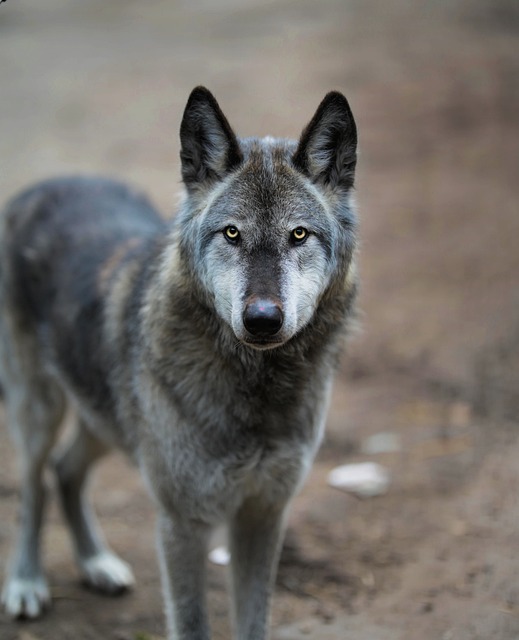It started, Alessio Camatta says, with “love at first sight.” After his beloved German shepherd died of a common genetic defect in 2006, Camatta, a soft-spoken construction worker from a town on the hillsides overlooking Venice, Italy, went looking online for a heartier new pet.
Soon enough, he found a website selling an imposing but beautiful breed: Czechoslovakian wolfhounds. “After one month, I went to get a puppy,” he says—a female, Uma, which he bought for €800. On a sunny day in early April, standing outside the imposing 12-foot-tall chain-link enclosure he built to contain his five dogs, he laughs at how unprepared he was for owning the breed. “People,” he joked, “don’t do this at home.”
Czechoslovakian wolfdogs are a controversial breed. Bred as a war dog for the Czechoslovakian military, they combine the DNA of a German shepherd and a Eurasian wolf, a gray wolf subspecies. Today, they are just one of many varieties of wolf-dog hybrids increasingly marketed worldwide as pets. With maximum weights that rival Great Danes, and personalities sometimes more wolf than dog, these hybrid breeds can be demanding—even, in some rare cases, to the point of taking their owners’ lives.
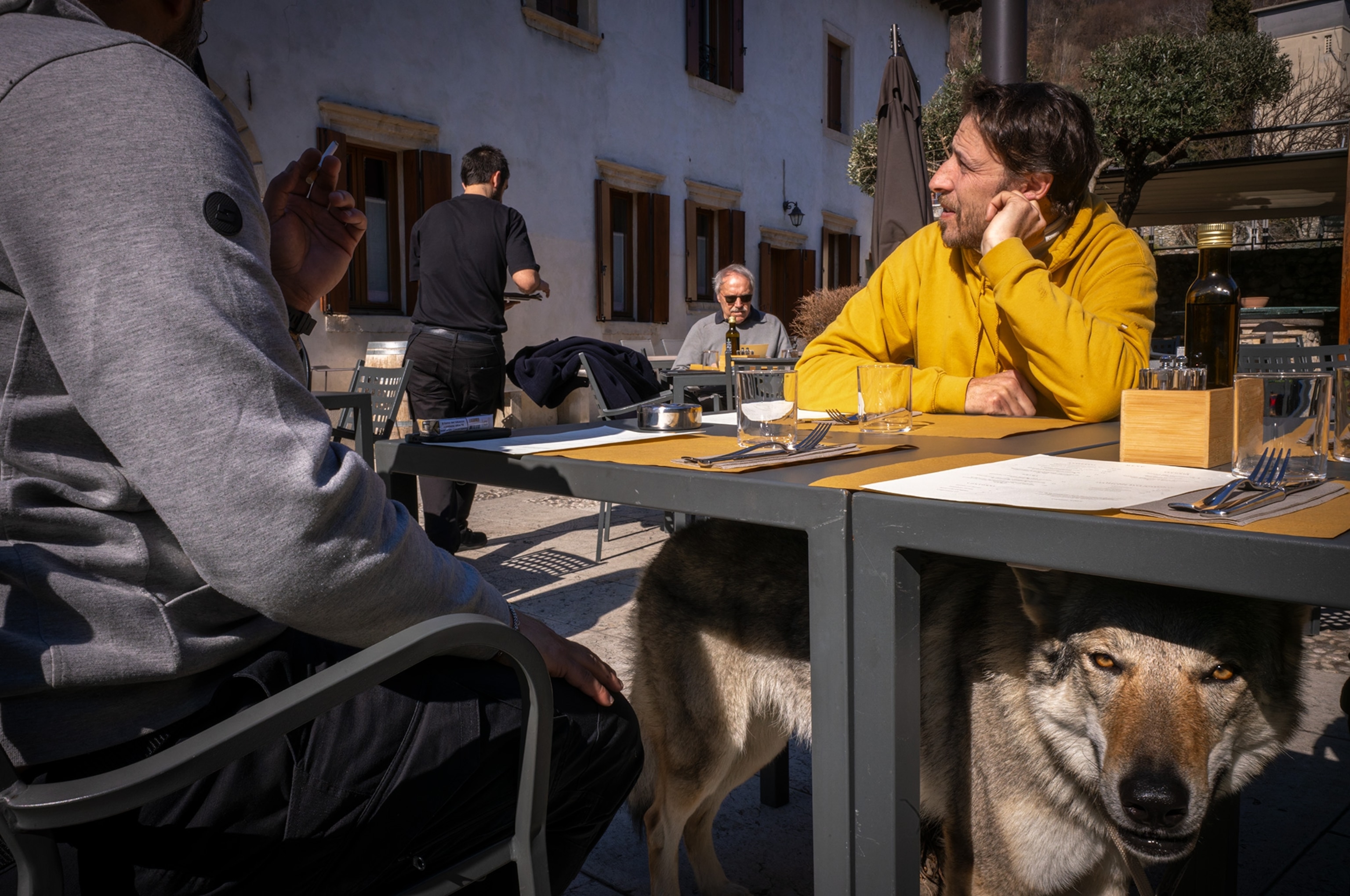
Breeder Alessio Camatta and canine educator Erica Cesari visit a restaurant with one of their Czechoslovakian wolfdogs in northern Italy in February 2025. Both emphasize the importance of exposing wolfdog puppies to human environments from an early age—a key part of preventing anxiety and behavioral issues in a breed known for its sensitivity and high reactivity.
After purchasing that first dog, Camatta went on to become one of dozens of breeders in Italy, where a Czechoslovakian wolfdog can now fetch a price of nearly €2,000. And across Europe, business is booming, popularized by TikTok creators and shows such as Game of Thrones, whose “direwolves” were played by wolfdogs. Camatta, who also acts as technical director for the Wolfdog Genetic Indexes Project, an initiative to responsibly breed and document wolfdogs, says that 20 years ago only a few hundred wolfdogs were sold in Italy each year. Now, it’s more than a thousand, he estimates.
While wolfdogs are becoming popular pets, a growing population of wild hybrids—mixes between wild wolves and domestic dogs—is troubling conservationists in parts of Europe. Historically, authorities encouraged rural residents to use guard dogs to protect livestock from wolf packs. But in places where guard dogs are left free to roam, and are not strongly bonded with their flocks, they may interbreed with wolves, according to Valeria Salvatori, a conservationist and expert in wolf hybridization at the Institute of Applied Ecology in Rome.
“If it was happening naturally, then this is evolution. But it’s like global warming—it is happening at a much faster pace, because of our intentional, or unintentional, lack of care,” Salvatori says.
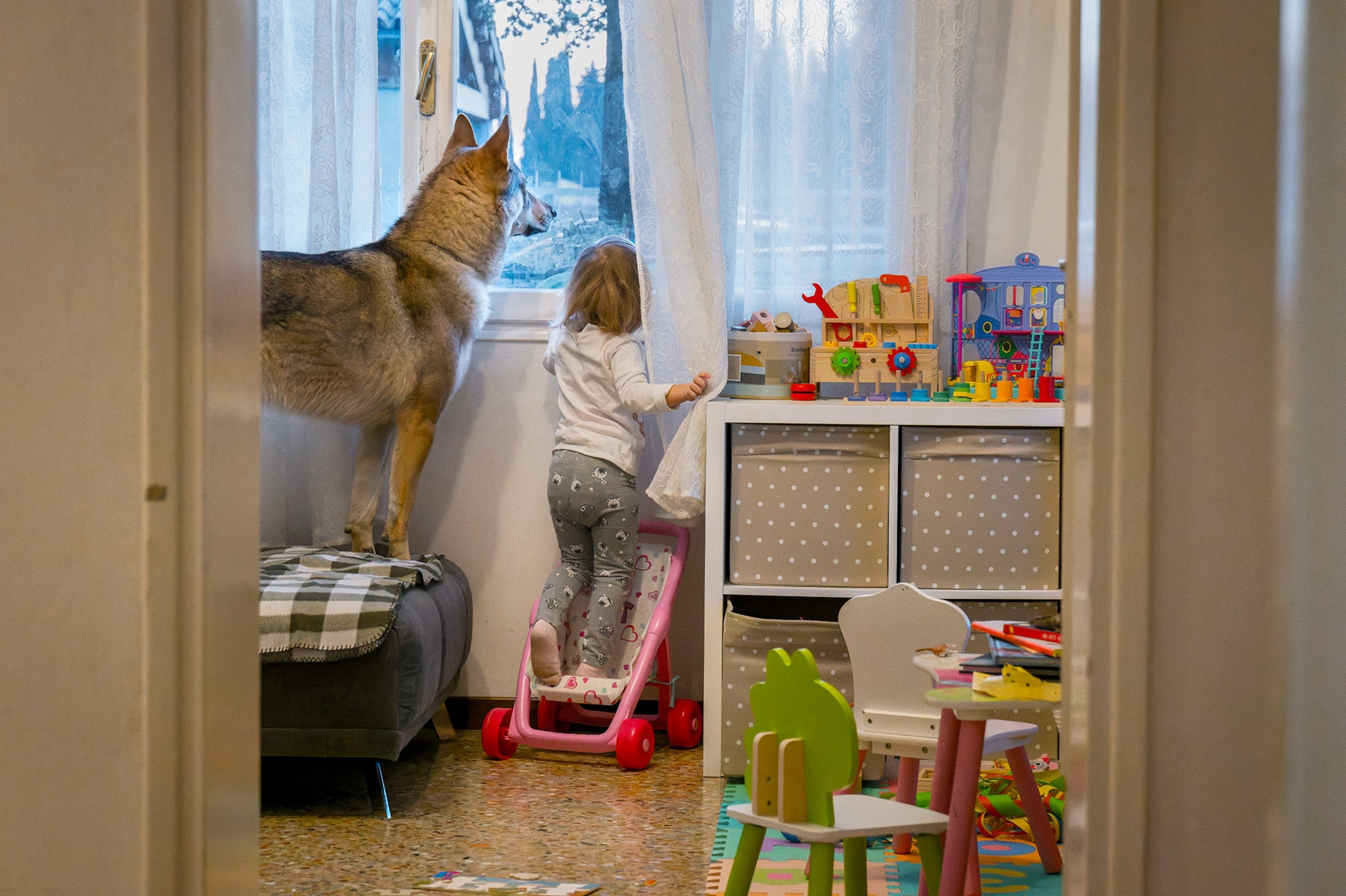
Manuel Tomasi and his wife, Sara Tonon, with their daughters Emma Sofia, 12, and Maya, 3, and their Czechoslovakian wolfdog Ronnie. Drawn to the breed’s genetic closeness to the wolf, the family envisioned Ronnie as both a companion for their mountain adventures and a guardian for their home—especially in a neighborhood where break-ins are not uncommon.
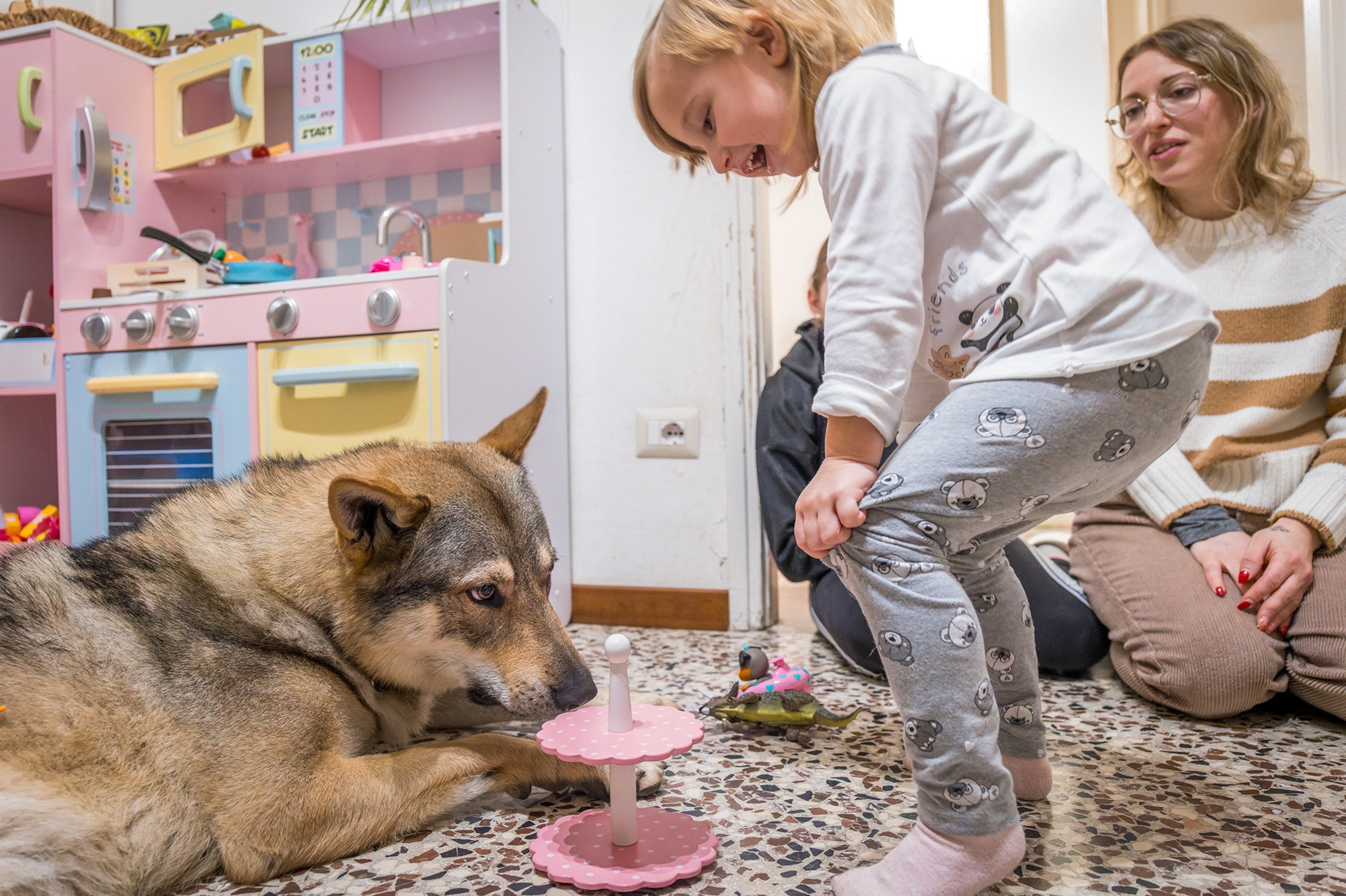
What began as a practical decision has deepened into something far more emotional. “People say wolfdogs are unpredictable,” the couple says, “but with our daughters, Ronnie is like a brother—protective, intuitive, and completely devoted.”
After decades of careful work to restore Europe’s wolves back to their original habitats, some countries fear the animals’ genes may be compromised by the introduction of dog DNA. Gray wolf conservation statuses vary by country, but the International Union for Conservation of Nature lists the gray wolf as endangered in Slovenia, where wolfdogs are beginning to infiltrate. And in most countries, the scale of hybridization is still unknown. The animals pose a particular challenge in the mountainous border regions of Italy, Croatia, and Slovenia, where wolves have recently come back from near extinction.
“We would like to protect wolves with their natural evolutionary heritage and history,” Salvatori said. “But how can I possibly control hybridization in Italy,” she says, where “local studies talk about 50 to 70 percent of individuals being hybrids?”
Together, these trends are challenging existing regulations and protections around wolves and dogs—and in each case, beg the question: What makes a wolf, a wolf?
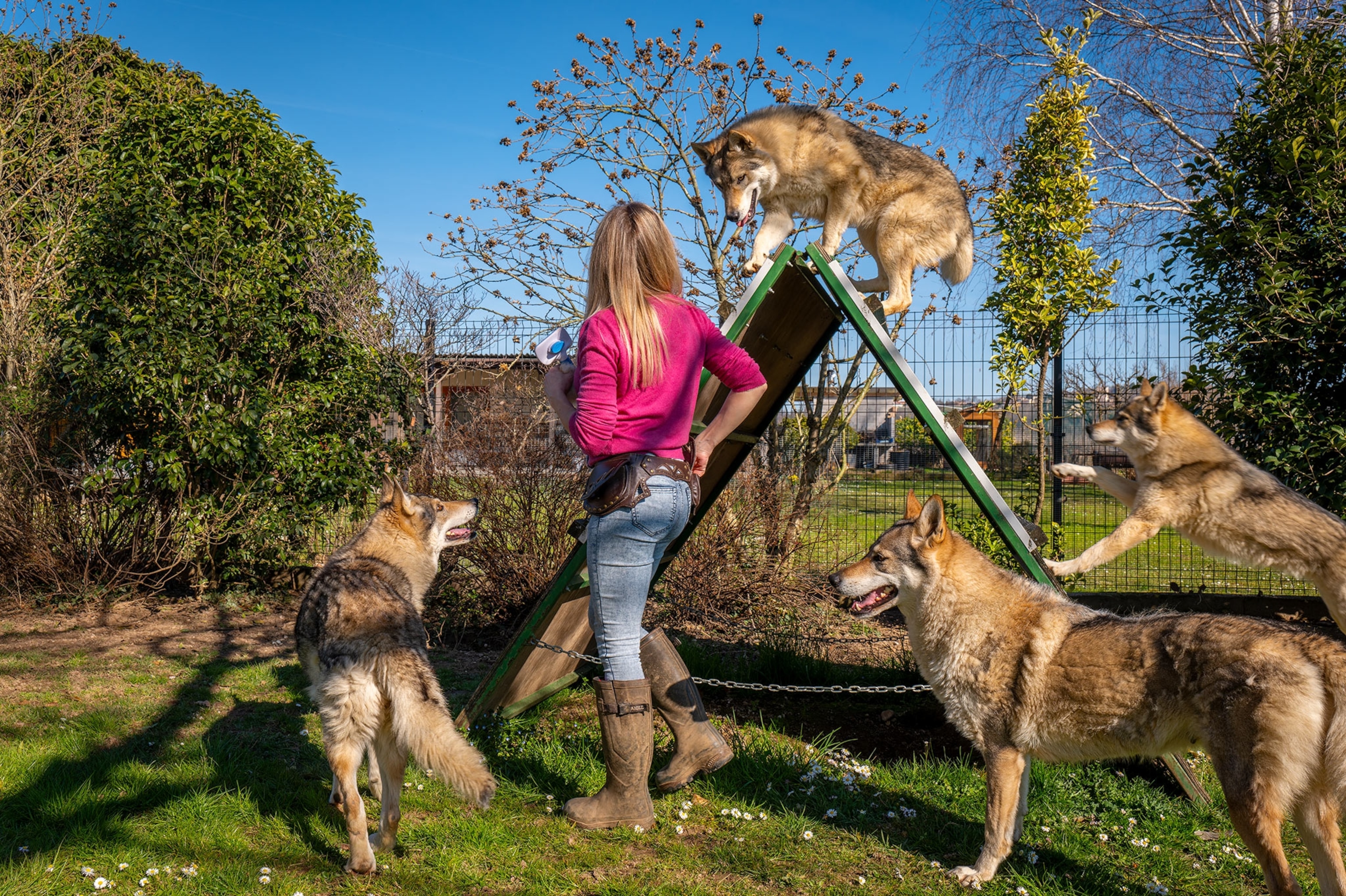
Serena Balliana, who has been breeding wolfdogs since 2017, runs Serlupi Kennel in northern Italy. Because of their wolf ancestry, the pups require structured early socialization, emotional safety, and constant attention to their individual needs. “The first weeks are foundational,” says Balliana. “If you don’t get it right, you risk raising unstable dogs.”
Illegal breeding
Reputable breeders such as Camatta maintain the percentage of wolf DNA in Czechslovakian wolfdogs at somewhere near 30 percent—just enough, he explains, to maintain a wolfish appearance and personality while making the animals suitable for domestication.
In Italy, by law, each new litter must have their DNA sampled and their parentage entered in a national database. Also under Italian and international law, as well as Europe’s CITES treaty, wolfdogs can only be kept as pets if they have been interbred in captivity for at least four generations.
Batting away one of his dogs as he jumps and wrestles with his forearm, Camatta sighs. In Italy, he says, a “bad canine culture” is spiking demand.
Online, it’s still easy to find breeders selling wolfdogs without papers, many of which may be the result of “backbreeding” with captive wolves, purchased on the black market and imported on false documents describing them as Czechoslovakian hybrids, Camatta says.
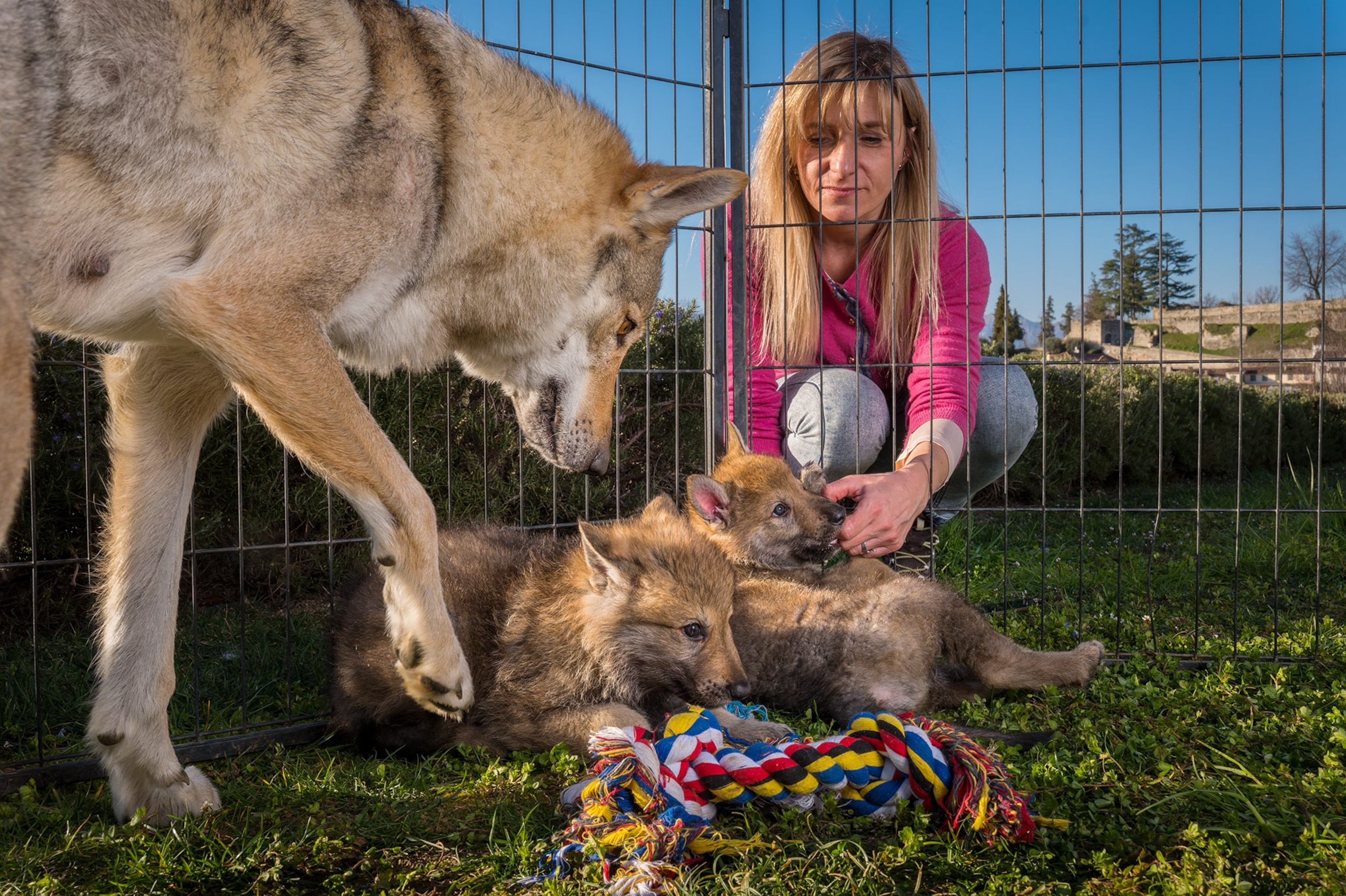
As demand for Czechoslovakian wolfdogs grows, so does the number of breeders entering the market, often without the necessary experience. Italy doesn’t require special certification to breed, and the resulting oversupply has begun to drive prices down. Balliana warns this trend is dangerous: lower prices make it harder for ethical breeders to invest the time, care, and expertise that these complex animals require. “This should never be about volume,” she says. “The well-being of the dog must always come first.”
In 2017, Italian officials seized more than 200 hybrids, illegally mixed with wolves smuggled from the Balkans, Scandinavia, and North America, across 54 Italian provinces in an operation known as Ave Lupo. Similar stings, in 2014 and 2021, removed dozens more illegal animals from breeders. Before the courts, there is often a lack of clarity over whether these animals count as wolves or dogs. In some cases, prosecutors have argued the answer is essentially “impossible to establish with certainty,” according to the Italian news publication Il Messaggero.
One seized animal, Camatta says, tested at 96 percent wolf, but was allowed to return to its owner. Italian law makes it virtually impossible to euthanize problematic animals—the state has a legal duty to care for captured strays and even dogs that have attacked their owners.
Wolfdogs in North America
In North America, meanwhile, wolfdogs can be “very easily” purchased, according to Alyx Harris, operations manager at the Yamnuska Wolfdog Sanctuary in Alberta, Canada.
On the continent, tens of thousands of wolfdogs live in captivity—far more than its wild wolf population. Currently, Harris’s sanctuary has 56 wolfdogs, most of them rescued from former owners and breeders.
“The fact that you can go out and get a wolfdog with no permitting… is a bit crazy,” she says. While many North American states and provinces ban wolfdog importation and ownership, neither the U.S. nor Canada restrict the breed under federal law.
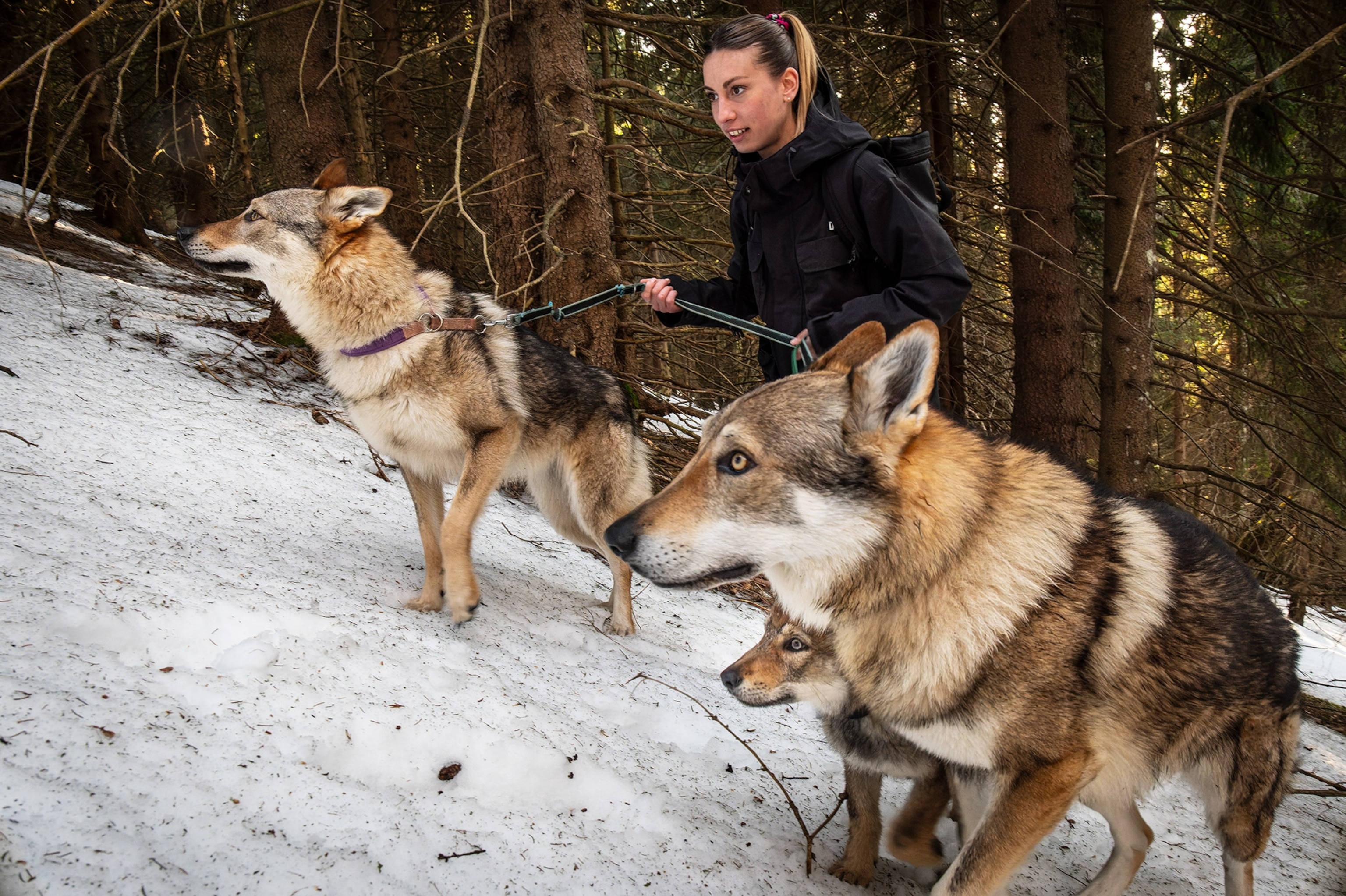
Sofia Imberti, 29, spends time with her three Czechoslovakian wolfdogs in the mountains close to her home in northern Italy. Imberti works early morning and night shifts at a textile factory, rising at 4 a.m. to make time for her dogs. “They belong in nature,” she says, “and that’s where I feel at home, too.”
Harris and others in the wolfdog business say owners are drawn to these breeds for their impressive size and ferocious reputation and are often taken with the idea of domesticating something powerful, wild, and free.
“The bond is with an animal that won’t be your pet, but will be your friend,” says Moira Schein, a caretaker at Mission:Wolf, a wolfdog sanctuary in Colorado.
But many owners don’t fully appreciate what they are getting into when they buy a wolfdog puppy, says Mike Gaarde, refuge director at Mission:Wolf.
“Around two to three years old, that’s when we get the phone call. Twice a week, we get calls from people hoping we can rescue their animals,” he says. “We have to turn down thousands of dogs.”
While Harris stressed that most wolfdogs are actually “instinctually very shy, timid animals,” in captivity, their wilder nature can make them dangerous pets.
“They like to be in big open spaces,” she says. “They don’t want to be in your house; that’s terrifying for them. Even walking on the leash, you are taking away their ability to flee.”
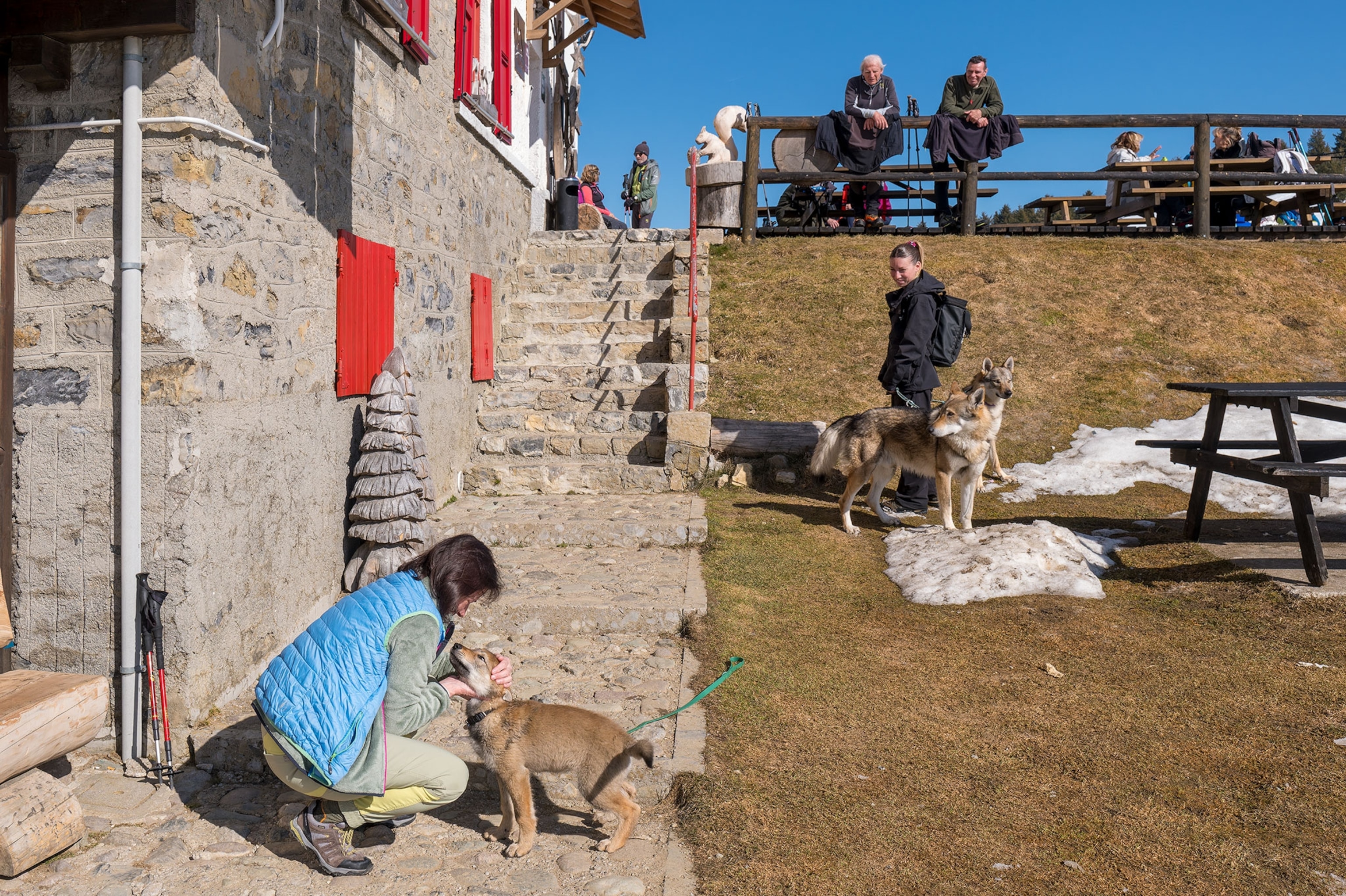
Imberti was drawn to the breed for its wild appearance and primitive nature. She values the way it preserves behavioral traits close to its wolf ancestors. With over 40,000 followers on Instagram, she now uses social media to educate others about the breed—its beauty, its challenges, and the deep responsibility it requires.
Worse, Harris says, unlike other breeds, wolfdogs often “lack an affinity toward humans.” Even when well trained, they will often seek out opportunities to assert themselves as leader of the pack. “They don’t want to be pets,” she says.
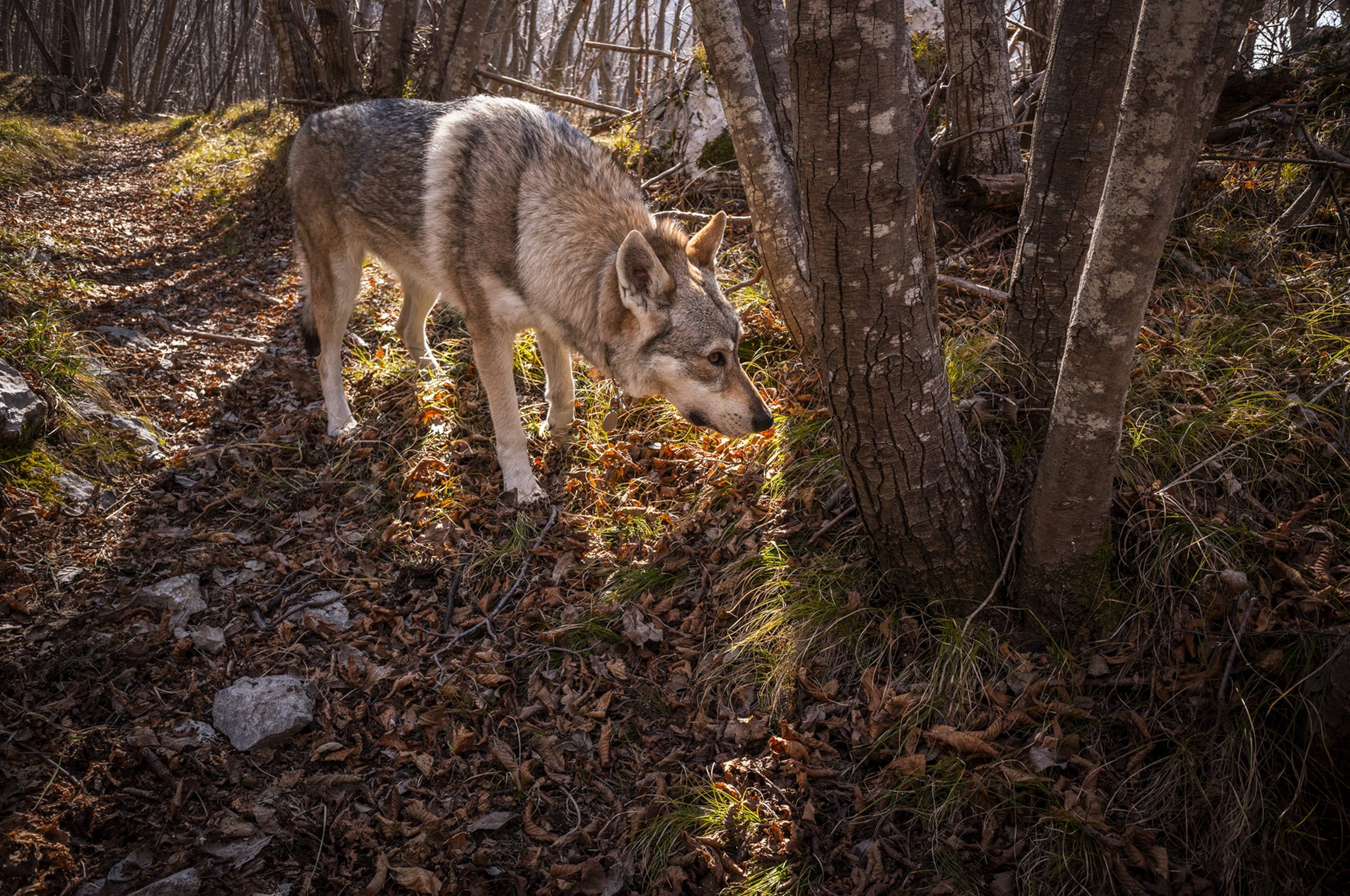
One of Alessio Camatta’s wolfdogs picks up a wolf’s scent in the forest.
Wild hybrids on the rise
Driving down the gravel logging roads that crisscross the forests near Slovenia’s border with Italy, Tilen Hvala keeps a sharp eye out for the telltale signs of wolves. In 2023, Hvala became one of just a handful of researchers across the continent to successfully trap and collar a wolf— in this case, six-month-old Jakob, whose movements were tracked by the Slovenian Forest Service as part of the Life Wolfalps EU Project. Just over a hundred wolves live in the small European country today, a major victory after facing near-extinction in the 1990s.
You May Also Like
“Sometimes I wonder, when I’m driving on this kind of road, how many times they are just looking out of the trees,” says Hvala, a biologist with the Slovenian Forest Service. Sure enough, we soon come upon a wolf pack’s resting place from the night before—matted leaves surrounded by scat and bones just a few hundred feet from a logging road.
Tracking data is instrumental to better understanding how the area’s wolf packs behave and use the landscape. It can also reveal where hybridization occurs.
“If you have high mortality rates, unstable packs and, at the same time, a lot of dogs in the environment, shit happens,” says Miha Krofel, a Slovenian wolf researcher working with the EU project.
Most wild hybridization occurs in areas where wolf packs are disrupted, usually by hunting or poaching, and female wolves go searching for a new breeding partner.
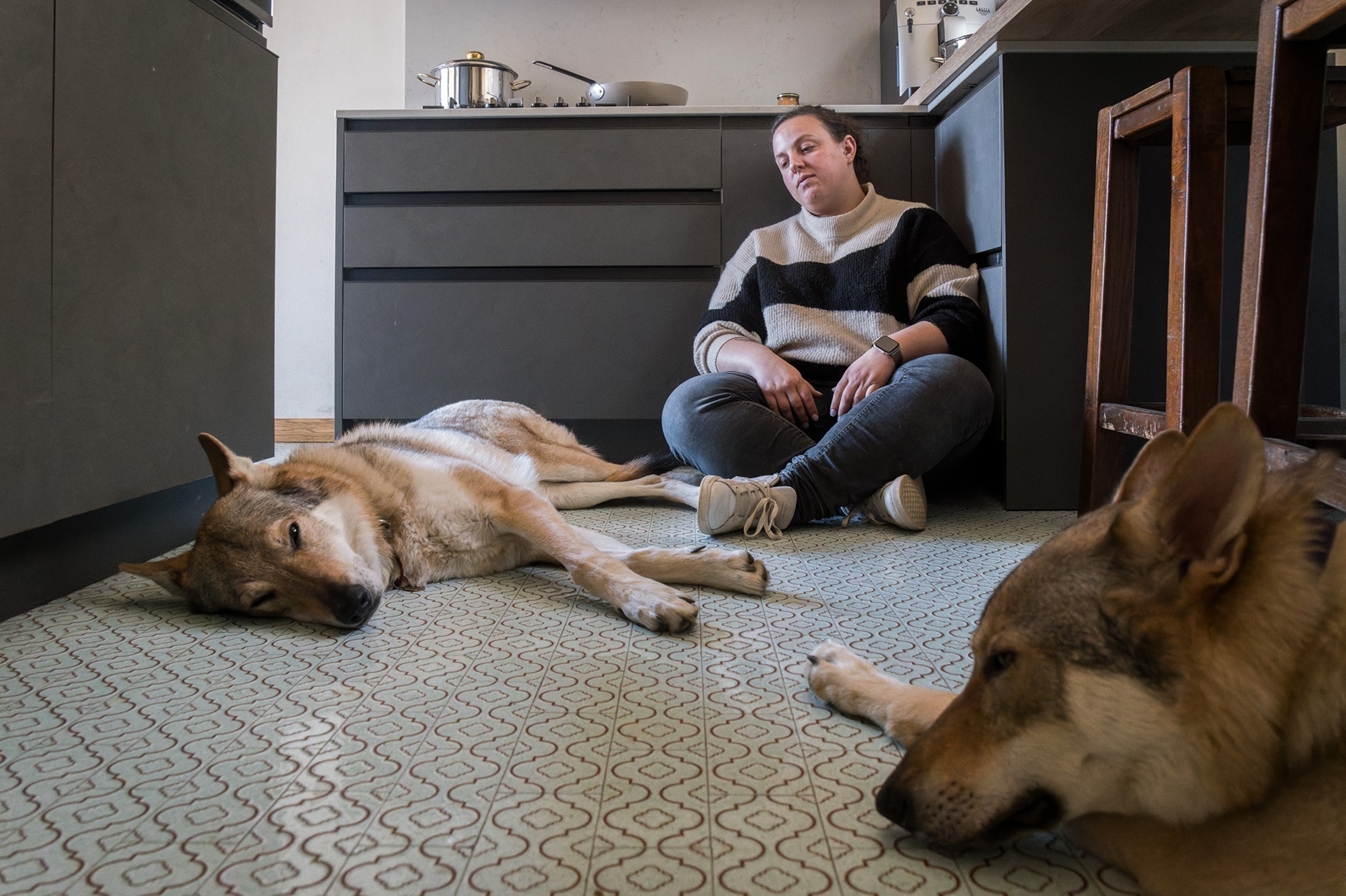
Federica Merisio, a longtime enthusiast of the Czechoslovakian wolfdog, shares a quiet moment with her dogs Fides and Verbena—known as Pippi—at home in northern Italy. Merisio believes that to truly understand a wolfdog, you must learn to observe—reading the smallest shifts in body language and energy. “You can’t just watch them,” she says. “You have to feel them vibrate in your bones.” With her two females, she continues to train in utility and defense work, a practice that strengthens their bond and mutual trust.
It was such circumstances that likely produced Slovenia’s first recorded hybrid, a large, black animal that entered the country near the Italian border in 2021. In response, Slovenia took no chances, killing the animal and its offspring, save one that escaped back over the border.
In neighboring Italy and Croatia—where escaped, feral, and unmanaged dogs are a much more common phenomenon—wild hybridization is a much more serious problem. In some parts of Italy, more than 70 percent of wolves have dog DNA, according to research by Sapienza University in Rome.
In Dalmatia, a narrow strip of land on Croatia’s Adriatic coastline, the rate is as much as 80 percent, says Tomaz Skrbinsek, a researcher at the University of Ljubljana in Slovenia. There, a so-called “hybrid swarm” has formed after wolves colonized war-torn areas vacated in the 1990s and encountered abandoned strays.
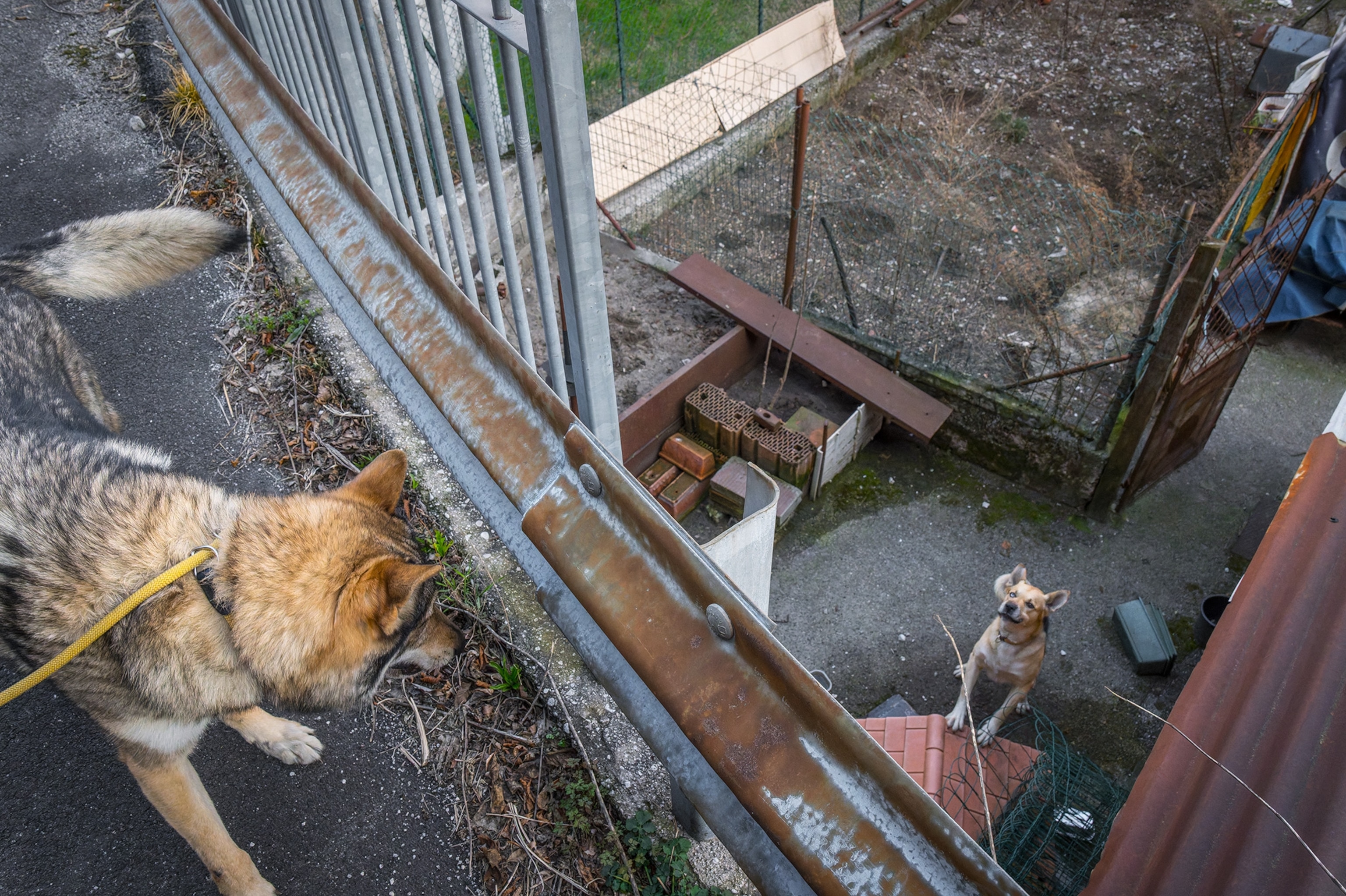
Czechoslovakian wolf dogs retain subtle body language and movement patterns that often confuse domestic dogs, sometimes resulting in fear or aggression in public spaces. For owners, it means constant awareness—and sometimes, physical risk. Camatta and others warn that without proper training and understanding, these misunderstood signals can turn everyday walks into confrontations.
In places like Dalmatia, where hybrids are not yet being tracked with radio collars, Skrbinsek worries hybridization could lead to animals that are more comfortable with humans and urban environments. That, in turn, could erode support for protecting wolves from hunting and encouraging their return.
“If you have these behaviors, these traits, in a wild animal that is wolf-like, that could spell disaster for wolf conservation,” he says.
What is a wolf, really?
Hybrids also raise difficult ethical questions, such as how to define what makes a “natural” wolf. With millennia of crossbreeding between wolves, domestic dogs, and other canids like jackals, there is no standard definition for how much foreign DNA makes a wolf no longer a wolf.
Some conservationists view any mixture as a symbol of “pollution” in a once pure species. “It’s us humans that have caused that,” says Luigi Boitani, a zoologist at the Sapienza University of Rome and one of Europe’s main experts on hybridization. “It’s like an extinction. It’s our responsibility to do something.”
But it’s not known if hybridization really does produce worrying behaviors, such as fearlessness around people, or if hybrids crowd out gray wolves from their native habitat.
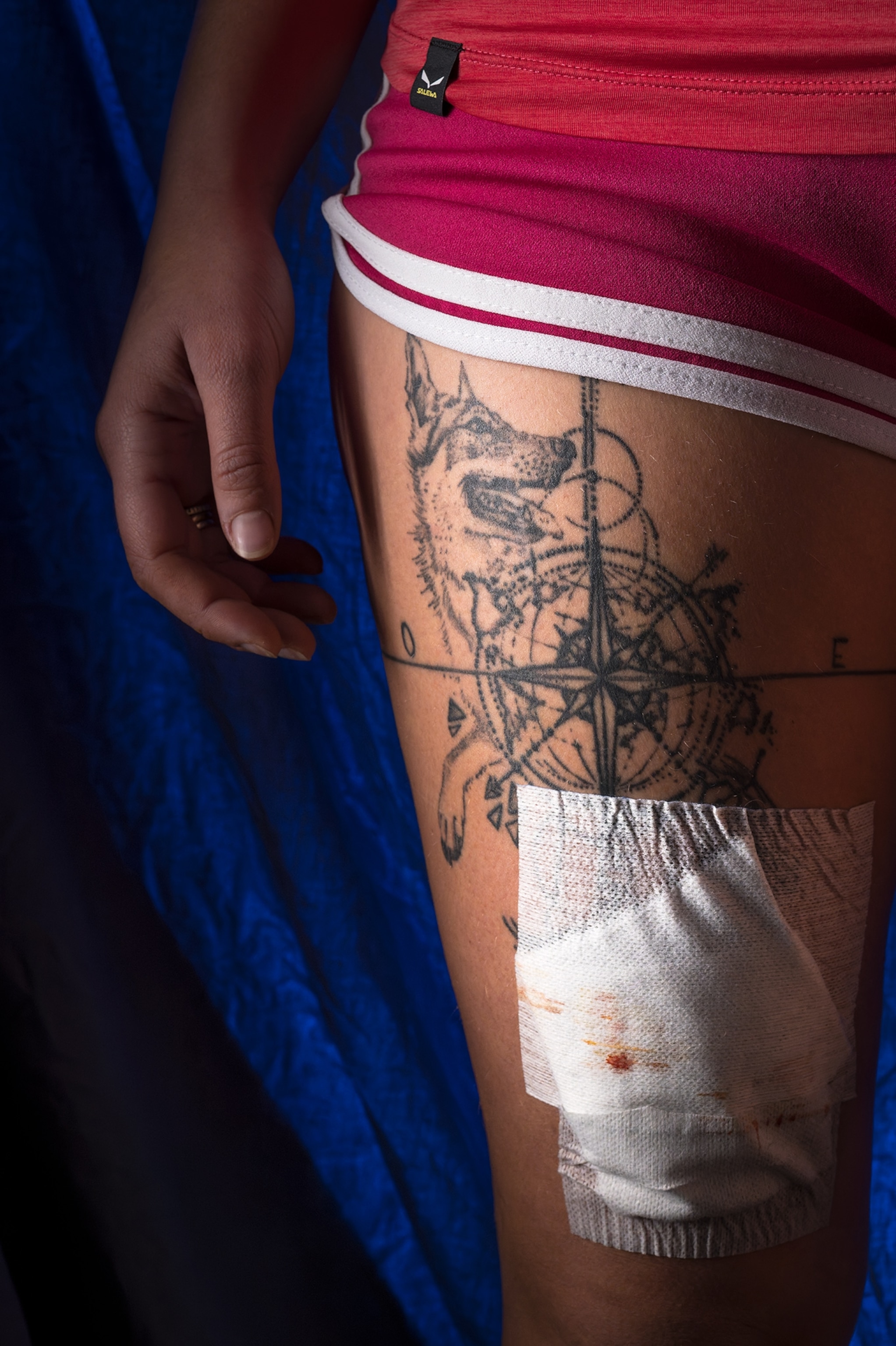
Sara Meloni reveals the fresh puncture wounds from a recent dog attack, alongside tattoos of wolfdogs inked across her skin. Just days earlier, she and her Czechoslovakian wolfdog, Era, were attacked by a Labrador—one of several incidents she encountered in recent months.
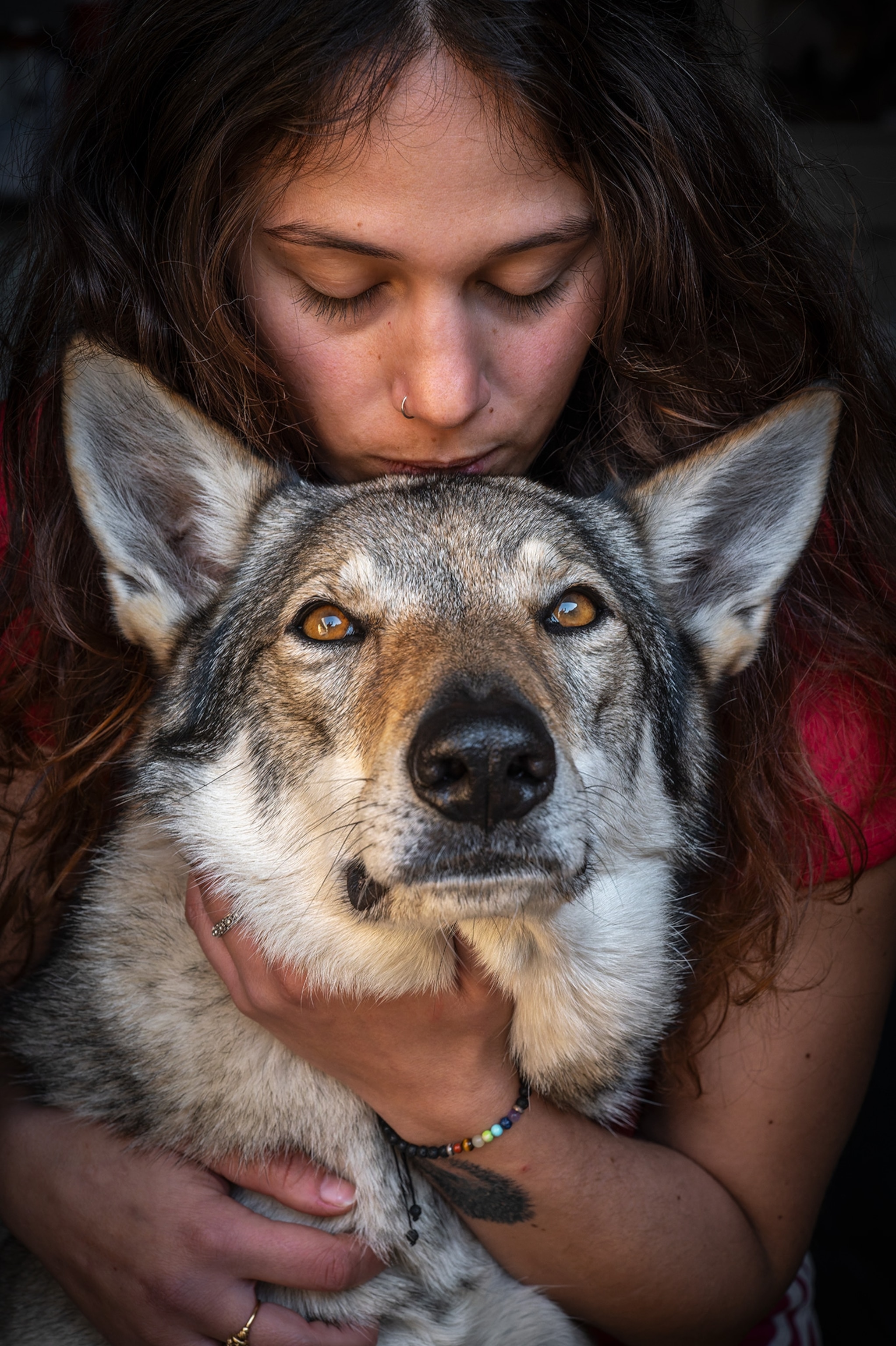
For the past five years, Meloni and Era have moved through life as a tightly bonded pair—one human, one animal, both shaped by each other. “She changed me,” Meloni says. “Not for myself, but for her.” Their relationship is built on mutual respect, where emotional safety flows both ways.
“It is really critical that we get this knowledge,” says Krofel, the Slovenian scientist. Without it, he says, it’s hard to convince policymakers to cull hybrid wolves, or implement other measures to prevent their spread.
For now, without a clear definition of what makes a hybrid, strange paradoxes have arisen. In Italy, a 96 percent wolf hybrid can be returned to its owner, but a similar hybrid in the wild, exhibiting all the behaviors of a wolf, may well be selected for a cull.
These paradoxes bother researchers, too, many of whom advocate for an end to the wolfdog trade worldwide. “I would personally ban the market, the production of this breed,” says Salvatori.
For Boitani, breeding new hybrid pets simply “doesn’t make sense.” “Humans already made the dog [through interbreeding] 10,000 years ago. Why do you want to do it again? Really, it’s like playing God.”
But wolfdog advocates assert the animals still have a right to live. “These animals didn’t choose to be bred,” says Harris, of the Canadian sanctuary. “I don’t think trying to cull them all is a very fair way to go about it.”
At least for now, wolfdog advocates and conservationists agree on one thing—humans must improve how they handle both domesticated and wild wolfdogs.
“Education will be the key,” says Gaarde. “What we don’t understand we try to control,” he says, “and what we can’t control, we try to destroy.”
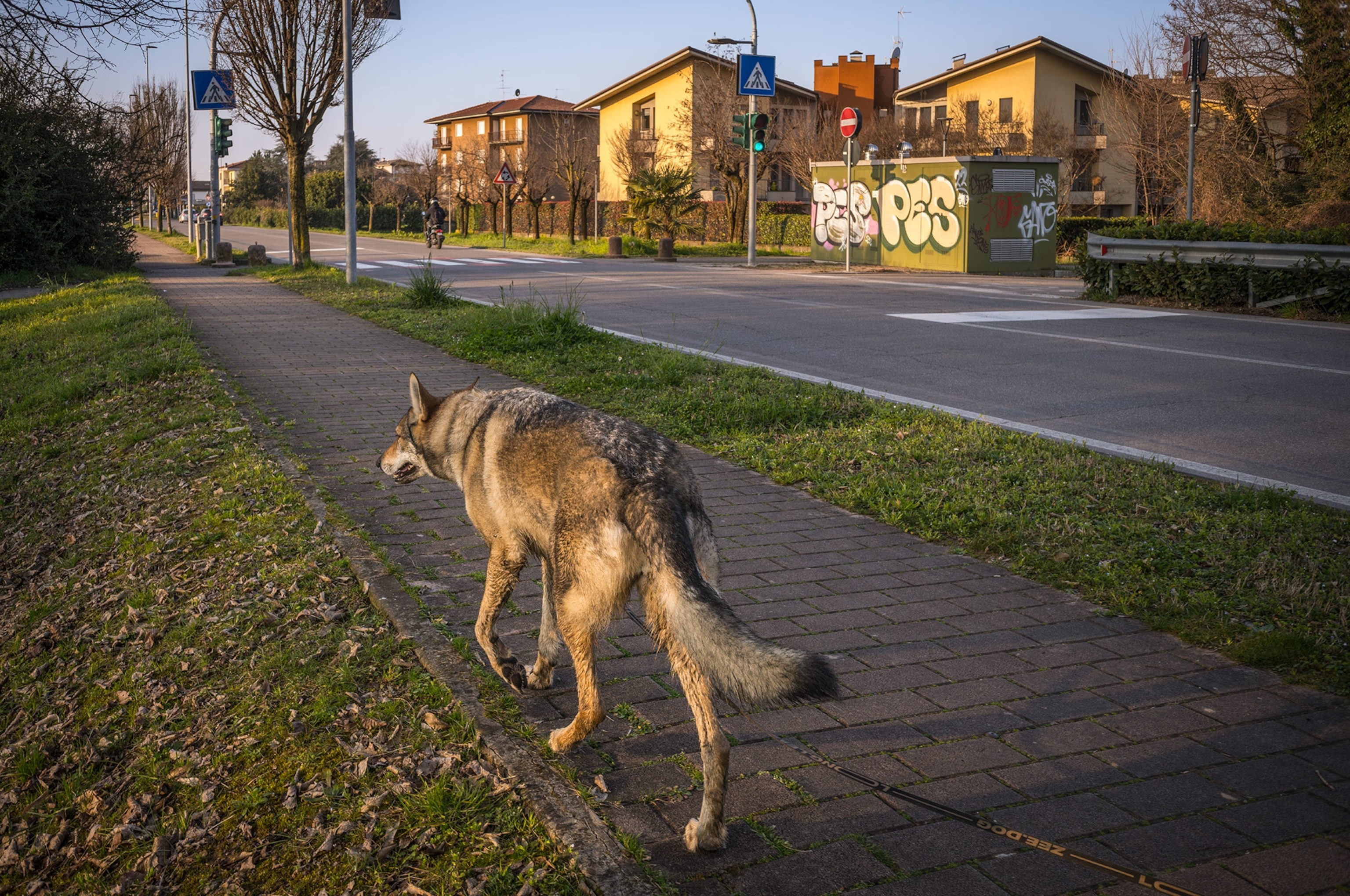
Sara Meloni’s Czechoslovakian wolfdog, Era, walks through the streets of northern Italy ahead of her owner. “She doesn’t just walk beside me—she walks with purpose,” Meloni says. “Because she knows who she is. And she knows I do too.”

